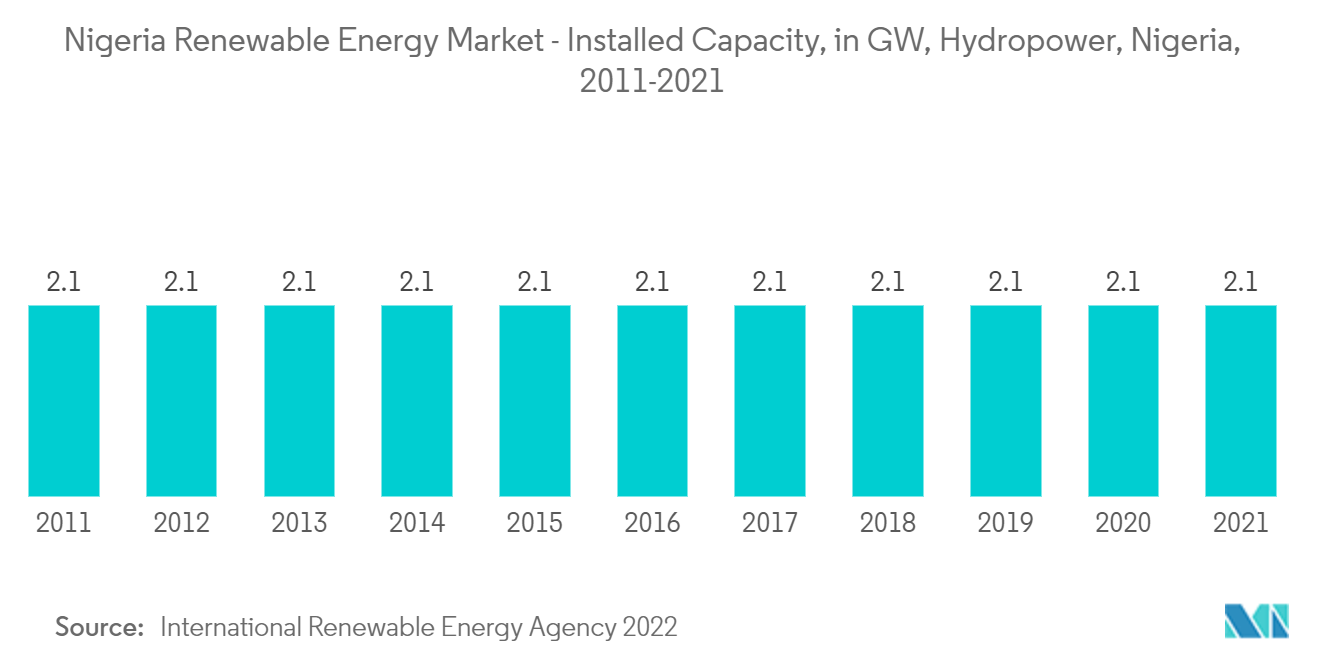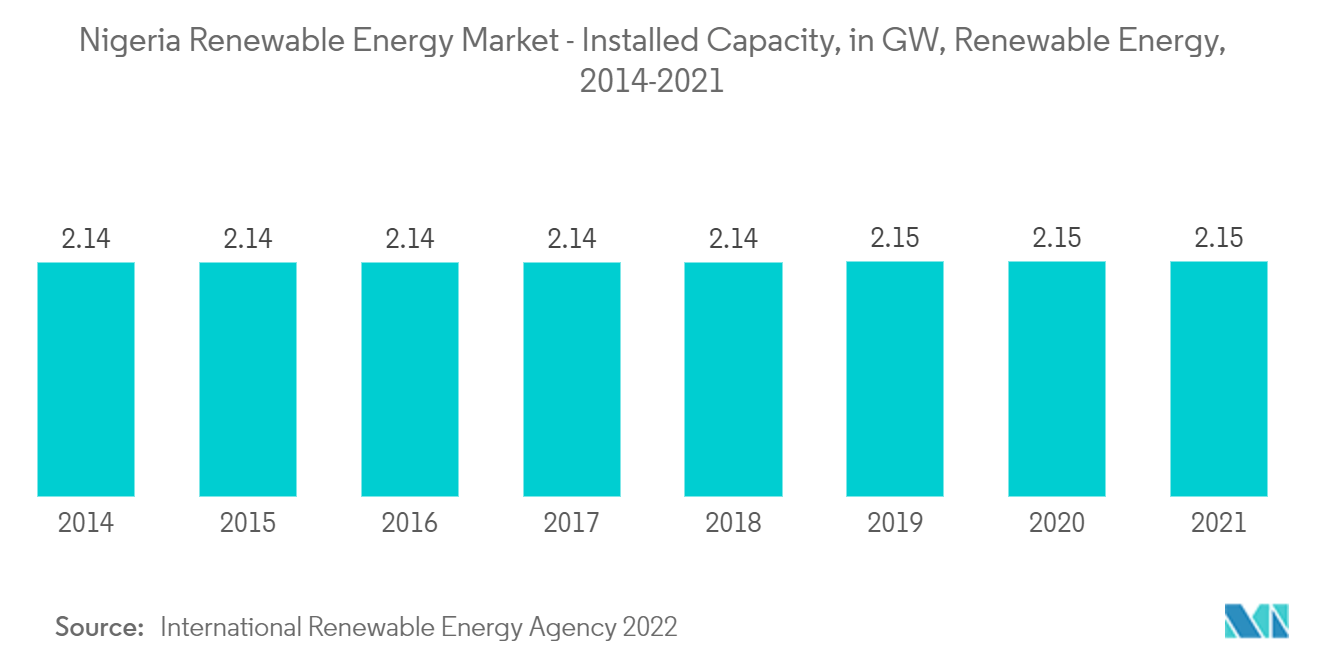Market Trends of Nigeria Renewable Energy Industry
This section covers the major market trends shaping the Nigeria Renewable Energy Market according to our research experts:
Hydro Power Generation to Dominate the Market
- Nigeria has large rivers and natural falls. However, the primary water resources that provide rich hydropower potential in the country are the Niger and Benue rivers and the Lake Chad basin. The country has an estimated 1,800 m3 per capita per year of renewable water resources available; however, it has been an economically water-scarce country owing to a lack of investment and management to meet the growing demand.
- Hydropower is the second-largest source of electricity in Nigeria after thermal power. As of 2021, the country has around 2.1 GW of hydropower installed capacity. Financial issues and delays have negatively affected the country's development of large-scale hydropower projects.
- In November 2022, the Government of Nigeria announced that it is seeking a bidder for the 700 megawatts (MW) Zungeru hydropower plant in Niger state. The plant comprises a reservoir at an elevation of 230 meters and a powerhouse having four 175 MW turbine/generating units for a total rated output of 700MW.
- Also, in September 2022, the President of Nigeria approved the construction of a mini hydro power plant in the state of Imo in the South of the country. The 10 MW project will be implemented in the water zones of the Otamiri River and the Nvorie River. The new hydropower plants are part of the government's efforts to achieve 100% electrification of the country scheduled for 2030.
- As per the above points, the hydropower segment dominates Nigeria's renewable energy market during the forecast period.

Favourable Government Policies to Drive the Market
- Nigeria is located in the tropics and receives high amounts of solar radiation throughout the year. Due to this, the country has significant solar potential.
- According to International Renewable Energy Agency, Nigeria's renewable power generation capacity reached about 2,154 MW in 2021. In recent years, the country has witnessed a notable rise in renewable capacity, and the government plans to promote cleaner power generation sources to power the urban and rural areas of the country.
- The Renewable Energy Master Plan (REMP) in Nigeria promotes deploying renewable-based power generation systems in the country. As part of this Plan, at the beginning of 2020, the government of Nigeria launched the NaijaSolar Power Project, which targeted around 5 million solar-based connections for off-grid communities.
- Further, in August 2022, the government promoted clean energy technologies for sustainable start-ups and small & medium enterprises (SMEs). This step aims to address environmental challenges in the country by adopting the Global Cleantech Innovation Programme(GCIP) initiative. The United Nations Industrial Development Organisation(UNIDO) launched the initiative to promote cleantech innovation and address environmental challenges.
- In February 2022, the United Kingdom planned to expand low-carbon energy projects throughout Nigeria through a GBP 10 million investment. The investment is expected to scale up renewable energy project developments, such as solar while leveraging domestic capital by blending finance to de-risk transactions.
- Owing to the above points, favorable government policies to promote renewable energy generation is expected to drive Nigeria's renewable energy market.

